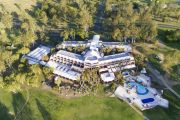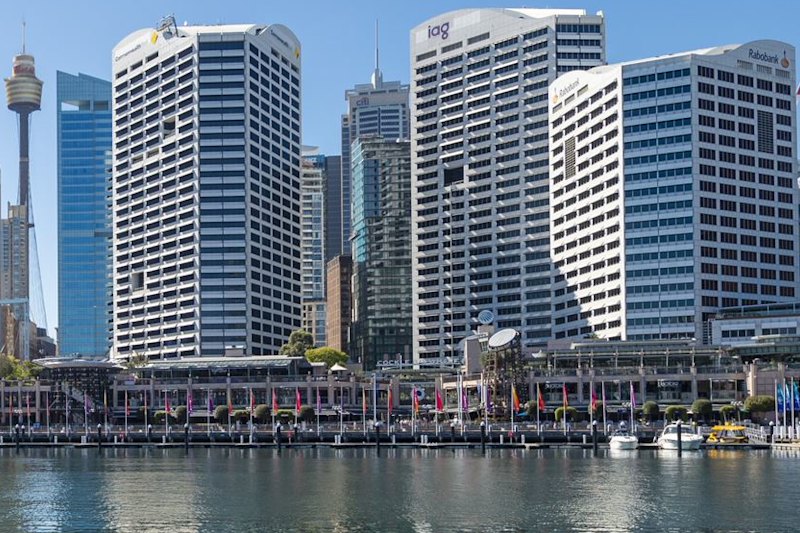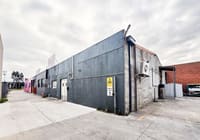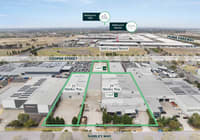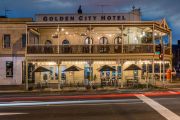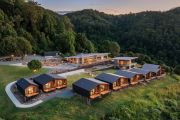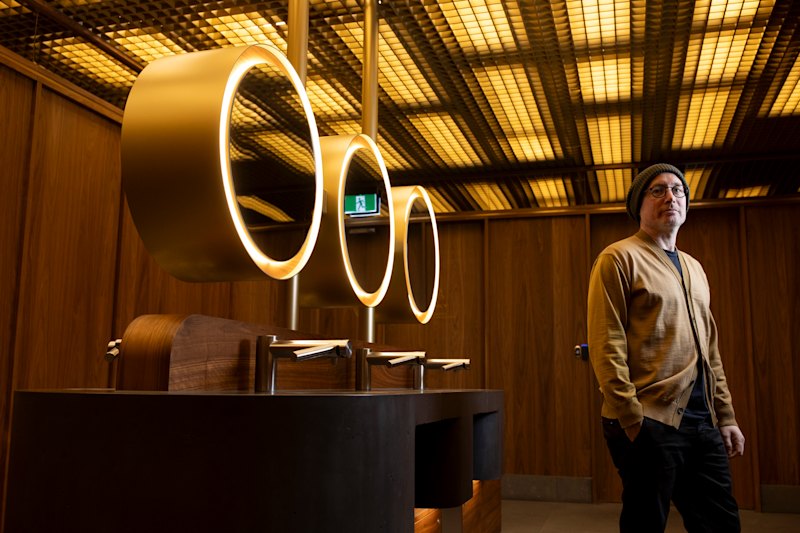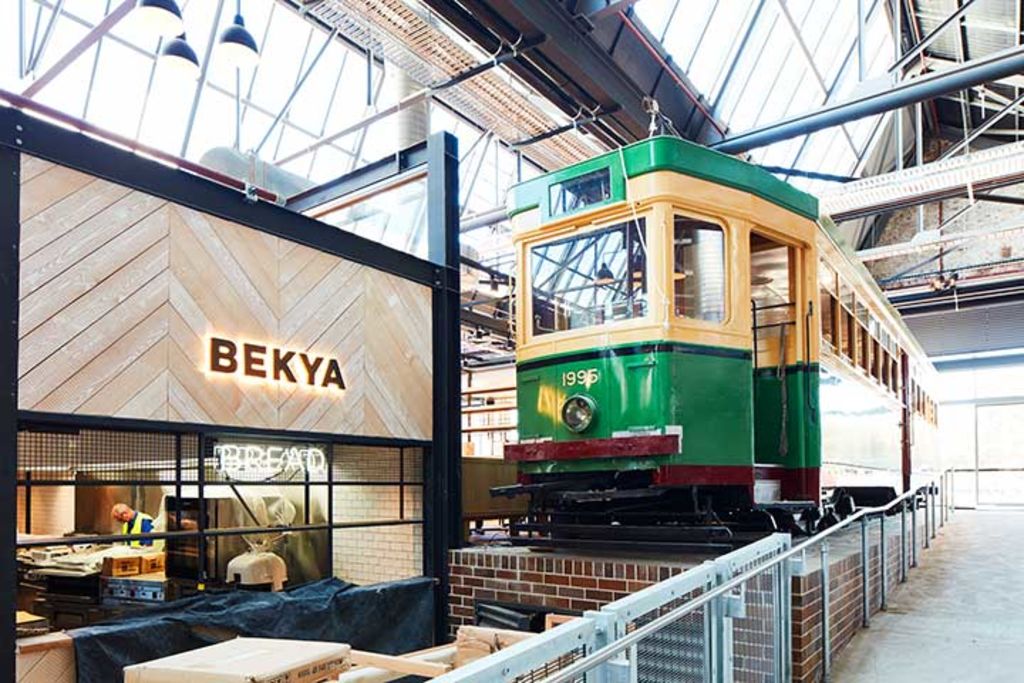
Community gets first taste of new Sydney dining destination Tramsheds Harold Park
From an independent grocer to farm-to-table cuisine, gelato, a gym and a hairdresser, it’ll all be there at the Tramsheds Harold Park.
Officially opened on Thursday, with a special caramel miso brownie flavour by Gelato Messina to mark the occasion, the restored Tramsheds will operate each day from 7am until late, with individual store times varying.
 Customers inside the Tramsheds on opening day. Photo: Rebecca Holland
Customers inside the Tramsheds on opening day. Photo: Rebecca Holland
The first operators at what is set to become the inner-west’s hottest dining destination include a selection of premium restaurateurs such as Butcher and The Farmer, Flour Eggs Water, Fish & Co, Osaka Trading Co, Bodega, Dust Bakery, Bekya, Gelato Messina, Garcon and Sir Chapel.
Belle’s Hot Chicken and Mamma’s Buoi will join the action soon after.
But it’s not all about the food.
“Tramsheds is foremost a food and dining destination, centred around connecting people to food providores, but we also see ourselves as an integral part of the community and have focused on selecting passionate and skilled operators who will cater to our customers’ daily needs seven days a week, from hairdressing to grocery shopping,” Mirvac’s Kelly Shoebridge said.
Supamart will be the supermarket provider for Tramsheds.
Shed-goers can sit in the food hall looking up to the expansive tall ceilings, a criss-cross of wooden beams and glass windows, surrounded by lush greenery and wooden tables (with inbuilt powerpoints) and polished concrete floors.
From here they can also watch all the action from the central kitchen – which can hired out by restaurants wishing to try out new new dining concepts.
As they walk through the large halls surrounding each store they’ll be treated to a different visual experience. Hanging greenery in Bekya’s Egyyptian fusionary restaurant, a boat with dangling fish in Fish & Co and ribbon after ribbon of pasta in Flour Eggs Water.
Each store is designed to open out to the wider space, with open-topped roofs sitting well below the huge beams that hold the tram shed together.
 Sustainable fish and chips from Fish & Co. Photo: Commercial Real Estate
Sustainable fish and chips from Fish & Co. Photo: Commercial Real Estate
There’ll be cooking classes that change by the week and focus on teaching the skills and dishes associated with each restaurant.
Sound travels – a good thing in this case – helping to give the place a bustling vibe.
When the glass front doors swing open each morning, you’ll hear the whirring of espresso machines of Garcon – which will also provide an evening espresso martini – and the smell of freshly baked bread from Dust Bakery.
 Sheets of pasta outside Flour Eggs Water. Photo: Rebecca Holland
Sheets of pasta outside Flour Eggs Water. Photo: Rebecca Holland
The whole building is light and airy and filled with original touches, including a set of stairs retained from the original building.
Even going to the bathroom is a sensory experience. The facilities have the feel of an old subway station, albeit far cleaner.
If all that’s not enough, there’s an old tram on hand to remind you of the building’s past use.
Restored tram to host private diners
Sydneysiders last sat down in tram R1 1995 in the late 1950s.
They were very different times. A time before the mere notion of fine dining had entered peoples’ minds, before trendy warehouse conversions could be found on every inner-city corner, when apartment developments like Mirvac’s Harold Park were a flight of fancy and just as buses were emerging as the innovative new solution to Sydney’s transport woes.
It was meat and three veg. There were no waffles with fried chicken or gourmet ice cream.
When people hop aboard again this weekend, it will be in vastly different circumstances.
For starters, the tram won’t be moving. And they won’t be passengers. Instead, they will be private diners eating food from farm-to-table restaurateur Butcher and the Farmer inside Mirvac’s conversion of the very workshop once responsible for the tram’s maintenance.
“When we commenced the restoration, the tram wasn’t just badly vandalised and graffitied; it also had widespread water damage to its roof and extensive rust after battling the elements for many years, which resulted in some of the steelwork being replaced,” said Howard Clark, Sydney Tramway Museum chairman.
“We used old documents, drawings and photographs to ensure the tram was accurately repaired; we were also able to reference the build of two working trams of the same type from the Sydney Tramway Museum.”
 The Tramsheds at night. Photo: Commercial Real Estate
The Tramsheds at night. Photo: Commercial Real Estate
Mirvac’s Ms Shoesmith said the restored tram integrated perfectly as an exhibition piece on the dining floor.
“We didn’t want to hide it away, so we have worked closely with the City of Sydney, the Tramway Museum and conservation experts to ensure 1995 is durable and will last for at least another century,” she said.
All very cosmopolitan, and all a very long way from the rusty wreck of a tram and the dilapidated tramshed that welcomed Mirvac’s builders in 2011.
